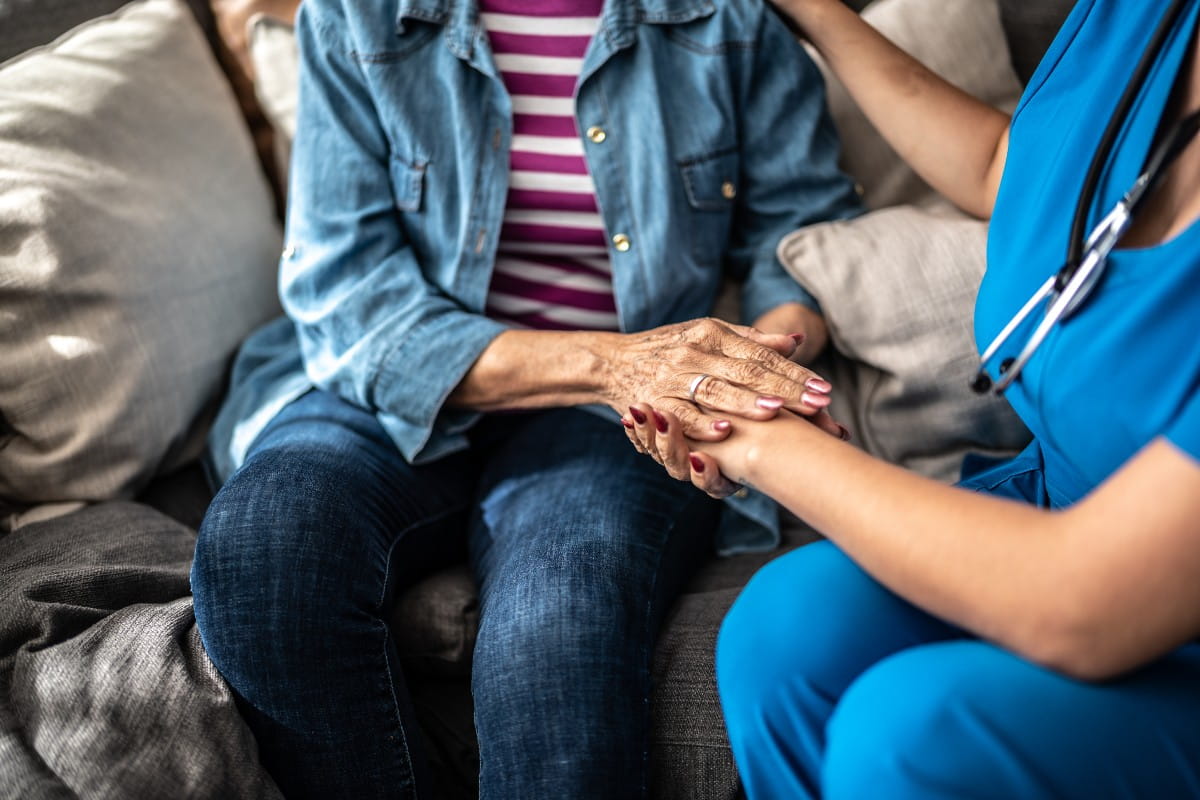Every year in the United States, more than 800,000 people have a stroke, and it is the fifth leading cause of death. A stroke, also known as a brain attack, occurs when something suddenly prevents the brain from receiving the oxygen-rich blood it needs.
This can be caused by a blockage from a clot stopping the blood flow (known as an ischemic stroke) or by the rupture of a blood vessel (known as a hemorrhagic stroke). Either way, the brain is deprived of the nutrients it needs, and brain cells begin to die. Getting help immediately is extremely important, as the American Stroke Association’s research indicates 1.9 million neurons die each minute a stroke goes untreated.
Time matters with a stroke
The good news is that for those who seek care quickly, medical advances can help restore the blood flow to the brain. “Depending on the type of stroke, there are different treatments and interventions we can offer,” says Wolfgang Leesch, M.D., a neurointerventional specialist at Riverside. “But patients need to understand how important it is to call 911, as every minute you waste means more damage to your brain.”
With timely treatment, full recovery can be possible. “When we see our patients in the emergency room,” Leesch continues, “they are very sick. But it is a truly gratifying experience to see some of these same patients back several weeks later, after some of our treatments, and they are back to life.”
That is why it is so important to call 911 immediately if you suspect you or someone near you is having a stroke. You should never drive yourself to the ER if you suspect a stroke, as you may lose consciousness while driving. Also, paramedics are able to communicate with the physicians in the ER, which allows treatment to begin as soon as possible.
It is important to recognize the signs and symptoms of a stroke
To help remember the signs and symptoms of a stroke, just remember to BE FAST.
B: Balance – If there is a sudden loss of balance or coordination
E: Eyes – if there is a sudden loss of vision in one or both eyes or blurry vision
F: Facial Drooping – If there is a sudden weakness of the face
A: Arm Weakness – If there is weakness of an arm or leg
S: Speech – If there is a sudden difficulty speaking or slurring of speech
T: Time to call 911
It is also important to realize that patients may experience only one or two of these symptoms. But, if there is any reason to suspect a stroke, 911 should be called right away.
Sometimes a patient experiences a transient ischemic attack or TIA, which is sometimes called a mini-stroke. With a TIA, the patient has the stroke symptoms, but then they go away. But, it is still important to seek care quickly as this can be a sign that you are likely to have a stroke soon.
There are ways to lower your risk of stroke, including:
- Visit your primary care provider regularly: This can uncover hidden risk factors like high blood pressure, high cholesterol and diabetes so they can be identified early and managed properly.
- Stop smoking: Quitting smoking will help reduce your risk of stroke as well as the risk of many other serious medical conditions.
- Achieve and maintain a healthy weight: A healthy weight helps you control your blood pressure, cholesterol and diabetes, which can all lower your chance of heart disease and stroke.
Riverside Regional Medical Center is the only certified Comprehensive Stroke Center on the Virginia Peninsula. Three other Riverside hospitals are certified Primary Stroke Centers: Riverside Doctors' Hospital Williamsburg, Riverside Shore Memorial Hospital and Riverside Walter Reed Hospital.
If you or someone near you shows any signs or symptoms of a stroke, remember to BE FAST and call 911 right away.
If you have questions about your own risk factors for a stroke, talk to your primary care provider. To make an appointment with a Riverside primary care provider call (757) 534-5352 to make an appointment or ask how to be seen safely in the office through a secure video visit.



